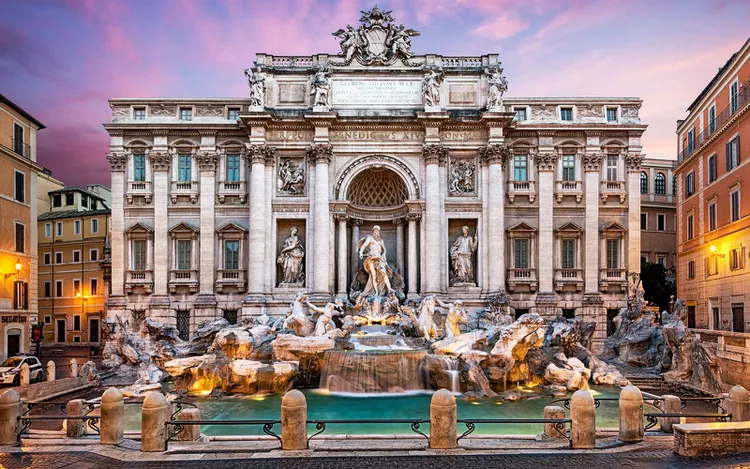1. Introduction
The Trevi Fountain is a pivotal landmark in Rome, rich with history and intriguing facts that many visitors may not know.
2. Historical Significance
The Trevi Fountain lies at the convergence of three roads (tre vie, in Italian, from which its name is derived) and is the endpoint of an ancient aqueduct, Aqua Virgo. Constructed in 19 BCE, the aqueduct is said to have been named for a beautiful virgin who led thirsty soldiers to a spring that once existed at the very same spot.
3. The Sea God Revealed
At the centerpiece of the Trevi Fountain, you might expect the god to be Neptune; however, he is actually the Greek sea god Oceanus, flanked by seahorses and mermen representing various water characteristics.
4. The Architect’s Untimely Death
Similar to the famed Sagrada Familiar in Barcelona, Nicola Salvi, the original architect of the Trevi Fountain, did not live to see his masterpiece completed. Commissioned in 1732, Salvi passed away in 1751, with completion finalized by sculptor Pietro Bracci in 1762.
5. The ‘Ace of Cups’ Vengeance
During construction, a local barber constantly complained about the noise. As a form of revenge, Salvi placed the “Ace of Cups” sculpture at the left of the fountain, ensuring the barber would never have a view of the completed structure.
6. A Cinematic Icon
The Trevi Fountain has graced several famous films, including Fellini’s “La Dolce Vita” (1960) and “Roman Holiday” (1953), as well as more recent productions such as “The Lizzie McGuire Movie” (2003).
7. Incidents of Vandalism
In both 2007 and 2017, activism turned vandalism as Italian activist Graziano Cecchini dyed the fountain’s waters red, protesting against corruption. Fortunately, the landmark suffered no permanent damage.
8. Charitable Donations
Traditionally, tossing coins into the Trevi Fountain is believed to ensure a safe return to Rome. Since 2006, a Roman Catholic charity called Caritas has collected approximately €3,000 daily from these tossed coins to support food and social programs worldwide.
9. Restoration Efforts
In 2012, the fountain needed urgent repairs after severe weather conditions caused pieces to fall. Restoration work lasted 17 months, concluding in November 2015, when the fountain’s waters resumed flowing.
10. Water Volume Facts
The Trevi Fountain is astounding in its water output, pumping approximately 2.8 million cubic feet daily. This amount greatly exceeds the water consumption of the average American household.
11. Legal Restrictions
Swimming in the Trevi Fountain is strictly prohibited, and offenders can face hefty fines, reportedly around €450. Authorities enforce this rule to preserve the fountain’s integrity and beauty.
For those planning to visit this stunning landmark, being aware of its rich history and regulations can enhance your experience and respect for this iconic symbol of Rome.




